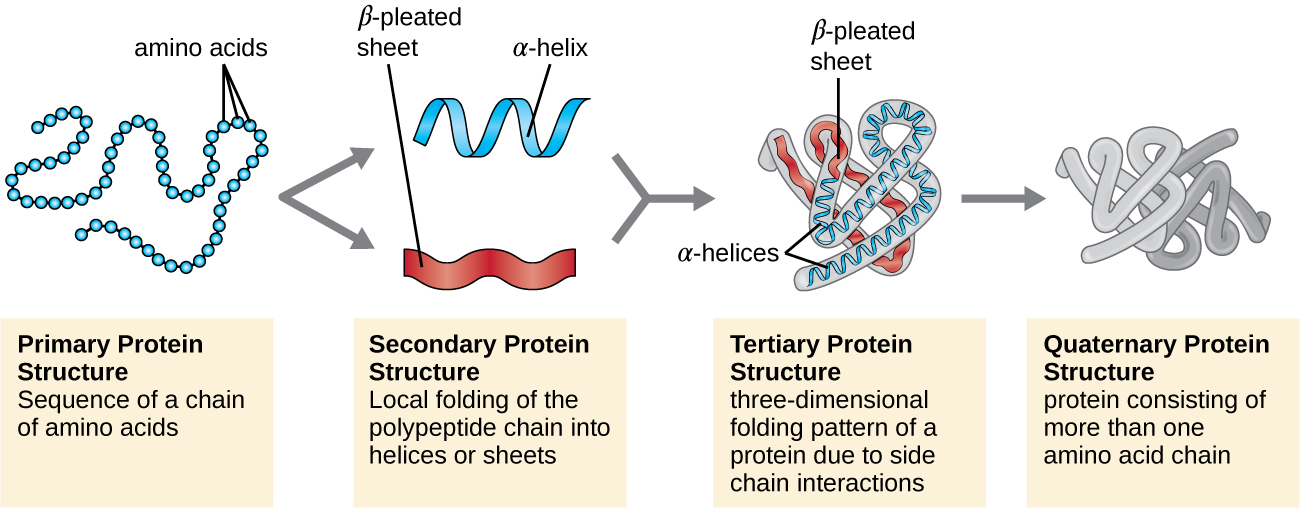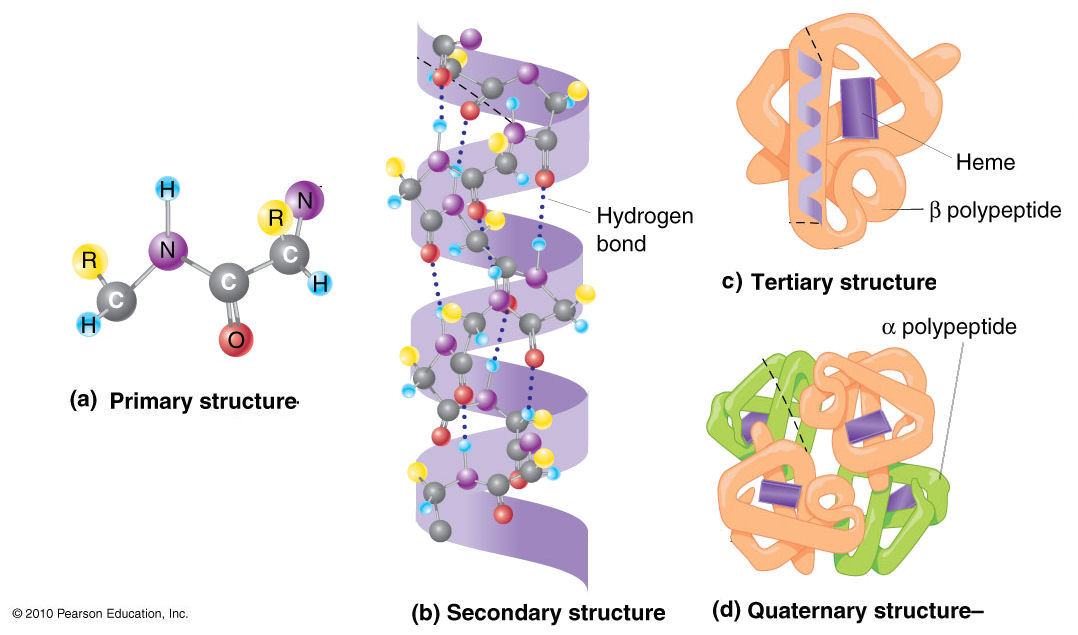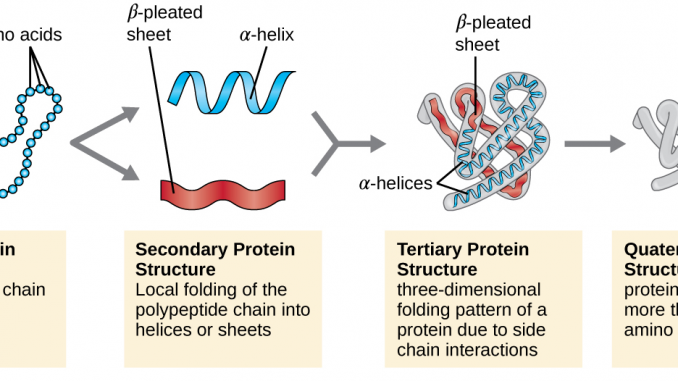Tutorial to help answer the question. View the full answer.
Protein Structure Introduction To Chemistry
Alpha helix and betta helix.

. Primary secondary tertiary and quaternary structure. Proteins structures are made by condensation of amino acids forming peptide bonds. Tertiary structure of a protein.
Answer 1 of 2. Biochem Exam 2 chapter 3B 47 terms. 20 different amino acids are found in proteins.
How does the sequence of nucleotides of the gene relate to the levels of protein organization. Proteins are synthesized as a primary sequence and then fold into secondary. The high proportion of proline residues leads to formation of the left-handed helical strands.
A The primary structure is the succession of amino acid residues usually abbreviated by the 1- or 3-letter codes. Primary Structure of Proteins The primary structure is the sequence of amino acids that make up a polypeptide chain. These levels also reflect their temporal sequence.
Give the name of the fourth protein structure and what makes it. The four levels of protein structure are primary secondary tertiary and quaternary. The different levels of protein structure is primary secondary tertiary and quaternary structure.
Unique three dimensional folding of the molecule. Regions stabilized by hydrogen bonds between atoms of the polypeptide backbone. Primary structure of protein refers to the sequence and arrangement of aminoacids in polypeptide chain.
The tertiary structure of a protein refers to the. Terms in this set 4 primary structure of a protein. The insulin molecule shown here is cow insulin although its structure is similar to that of human insulin.
Primary structure - consists of covalent peptide bonds between amino acids. Interactions of a protein with other subunits of enzymes. It is helpful to understand the nature and function of each level of protein structure in order to fully understand how a protein works.
A proteins primary structure is defined as the amino acid sequence of its polypeptide chain. Secondary structure - consists mostly of hydrogen bonds between local areas of a protein sequence. The four levels of protein structure are distinguished from one another by the degree of complexity in the polypeptide chain.
Give examples of the interactions in the tertiary level. The following points highlight the four main structures of Protein Organisation. Organization of Protein Structure There are four levels of protein structure.
Each protein has a unique sequence of amino acids which is determined by the genes contained in DNA. B The secondary structure is the 3-D arrangement of the right-handed alpha helix shown here or alternative structures such as a beta-pleated sheet. The linear sequence of amino acids forming the backbone of protein.
Linear chain of amino acids. C The tertiary structure is the 3-D folding of the alpha helix show as a purple. By convention four levels of protein organization may be identified.
Four levels of Protein Structure. This is also known as the sequence of the protein. Level of structural organization of protein.
The secondary structure is determined by the dihedral angles of the peptide bonds the tertiary structure by the folding of proteins chains in space. It is the description of basic structure of a protein. The sequence of amino acids in a protein is called its primary structure.
For example the hormone insulin has two polypeptide chains A and B shown in diagram below. A single protein molecule may contain one or more of the protein structure types. Primary secondary tertiary and quaternary.
Interactions between amino acid side chains covalent disulfide bonds between cyteines three dimensional spatial conformationof a single polypeptide chain. The simplest level of protein structure primary structure is simply the sequence of amino acids in a polypeptide chain. Formed from interactions between R-groups.
Primary structure secondary structure tertiary structure and quaternary structure. 25 marks 8 Explain transcriptional control of gene expression using the expression of the. Proteins are structurally organized into four level.
Tertiary structure refers to the three-dimensional structure of an entire polypeptide chain. 7 Define and compare the four levels of protein organization. Four level of protein organisations are.
Secondary structure of a protein. Linear arrangement of amino acids Secondary structure. Sequence of amino acids.
And quaternary structure is the three-dimensional arrangement of the subunits in a. These are called the primary secondary tertiary and quaternary structures of the protein. Primary structure of protein.
Define and compare the four levels of protein organization. Presence of alpha-helices or beta-sheets. A-helix and B-pleated sheets generated by hydrogen bonding.
Give at least 2 Hydrogen bonds between polar amino acids ionic bonds covalent bonds between sulphur containing amino acids hydrophobic interactions between non-polar amino acids. The hydrogen bonds frequently occur between back. We review their content and use your feedback to keep the quality high.
Secondary structure is the local spatial arrangement of a polypeptides backbone main chain atoms. The primary structure of collagen includes long stretches of the repeating sequence glycine-X-Y where X and Y are frequently proline or lysine. The major structural protein in the body collagen makes up 25 of all vertebrate protein.
Association of more than one polypeptide chain.

Four Levels Of Protein Structure

Level Of Structural Organization Of Protein Online Biology Notes

Level Of Structural Organization Of Protein Online Biology Notes

0 Comments